Office Furniture Review: The Tao Tronics Standing Desk
I’ve heard the reports that claim “sitting is the new smoking” and while I think that may be a bit overly-dramatic (imagine a commercial featuring a late-middle-aged man confessing, “I’ve been a life-long sitter, but I knew I had to quit. Now I’m on the patch!”), there’s been quite a buzz lately over the benefits of standing vs. sitting at work. A quick search on Amazon will yield an array of standing desks from manufacturers who tout improved health and even longer lifespans if you use their products. Always being the skeptical type, I decided to do a quick bit of research into the topic. What I found out was quite enlightening, but I’ll save that for the end of the review.
All this aside, when I got a chance to review the Tao Tronics Height-Adjustable Standing Desk, I was intrigued. I’m a bit of a sucker for office furniture (I admit it: I love hanging out at Staples) and I’m always interested in current trends in ergonomics. Full disclosure: Tao Tronics provided the desk used in this review free of charge. After measuring my workspace to make sure it would fit I agreed to the review.
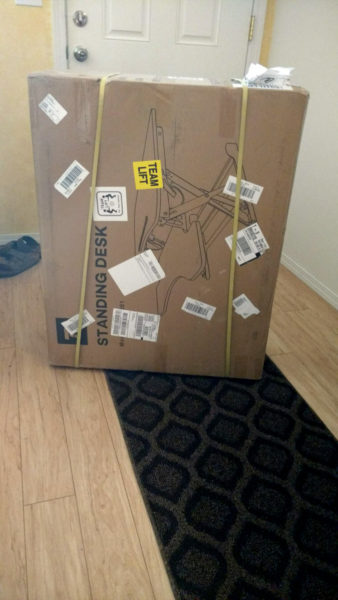

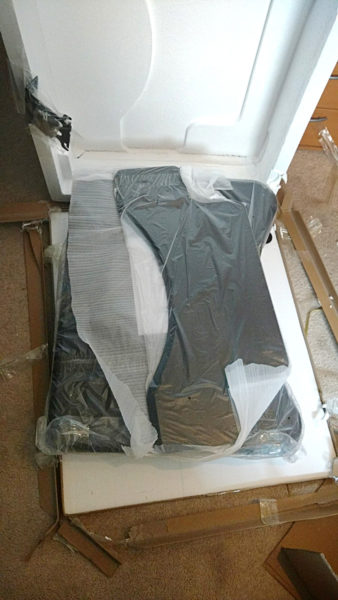
Unboxing and Assembly
The desk arrived on my porch in an imposingly large box: 50 lbs. shipping weight, so no worries about porch pirates. I dragged it into the house and then into my office for the unboxing. Aside from the fact that whoever packed this thing used enough packing tape to stretch from here to Seattle, it was fairly easy to liberate from its carton.
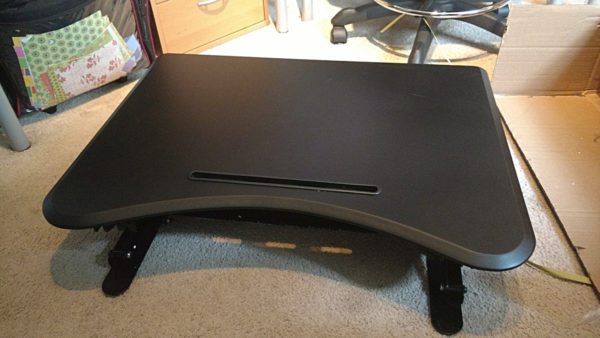
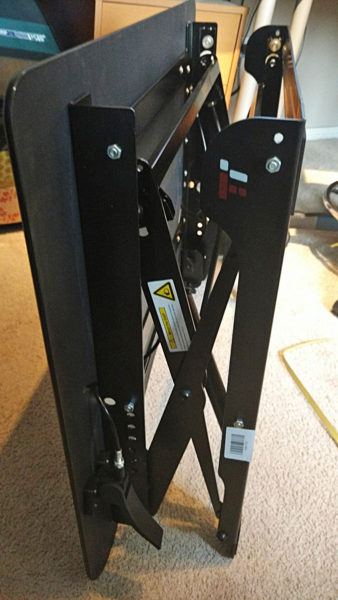

Thankfully, the desk comes mostly assembled. The only thing you need to do is assemble and attach the keyboard deck. This proved to be easy to do. A set of allen wrenches, some screws and some bracket nuts (all included in separate bag taped to the inside of the box) was all that was needed. Tao Tronics was even nice enough to include an extra wrench as well as extra screws and nuts. So I guess I’ll add those wrenches to the ever-growing allen wrench collection I’ve been amassing ever since they opened the Portland Ikea.

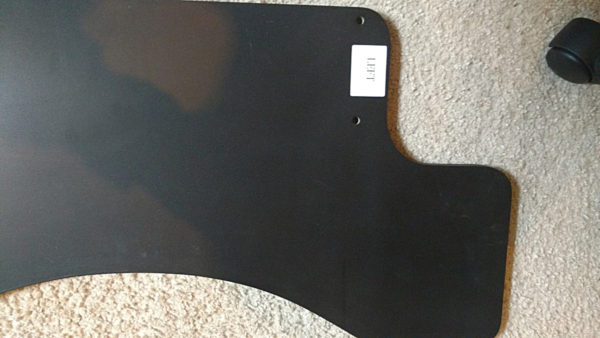
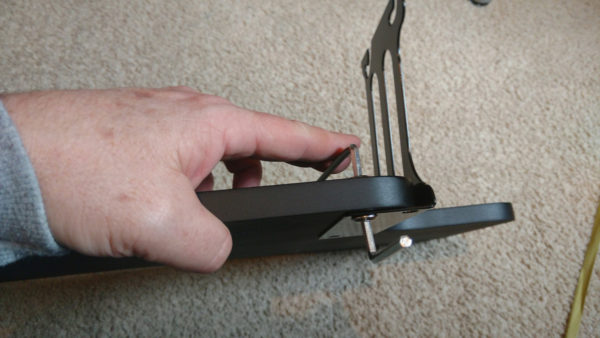
Two brackets mount to the bottom of the keyboard deck, and both the deck and the brackets are clearly labeled “LEFT” and “RIGHT.” Attaching the brackets to the deck was simple- merely drop the screw into the correct hole and push the nut into the hole on the opposite side. Hold the nut with one wrench and tighten the screw with the other. I had it assembled in under 10 minutes.
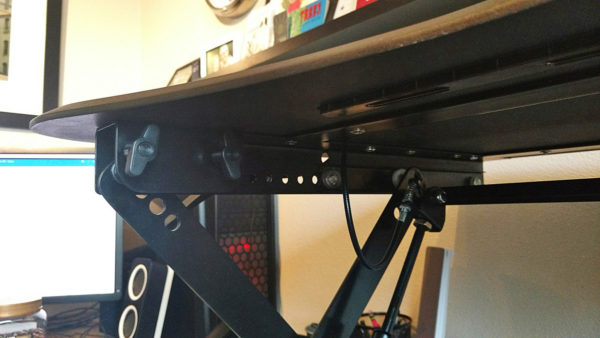
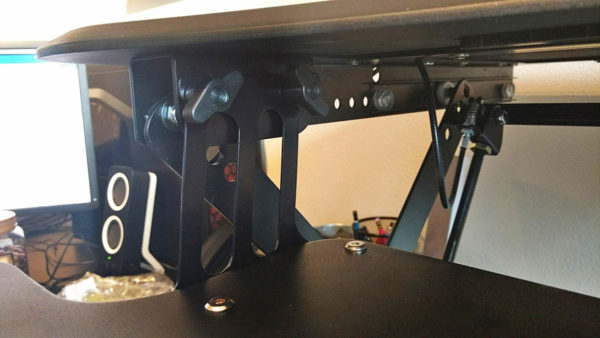
Attaching the deck to the desk was similarly quick. Each bracket has two hooks that rest on top of some screws that tighten with finger-turn plastic knobs. Just drop in place and tighten. I ended up taking the keyboard deck off my desk because I don’t need it at a laptop/tablet work station. But I wanted to go through the process to give you a proper review.
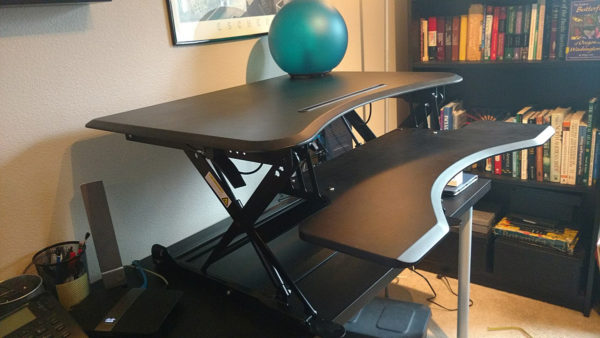
Here’s the fully assembled desk.
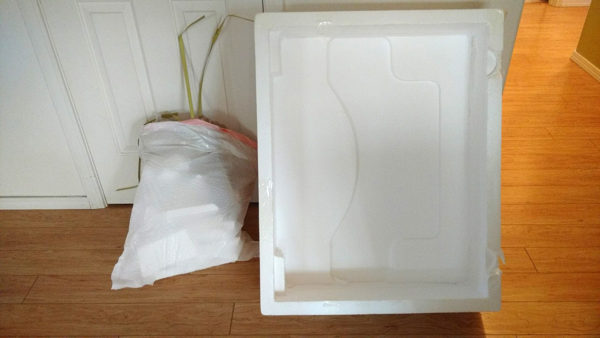
All told, unboxing and assembling took a little over half an hour. What proved to be more time-consuming, however, was the clean-up. There were wads of packing material, carboard doo-dads and a piece of Styrofoam so large you could probably use it as a makeshift raft. After I carted everything out of the office, there were little bits of Styrofoam everywhere that I had to vacuum up. I understand the need to protect the product, but I was left wondering if there were a less wasteful and more environmentally-friendly way to do it. The above photo shows how much crap was left over that had to go in the trash. I have no idea what I’m going to do with that hunk of Styrofoam. (Maybe I will make that raft.)
First Impressions
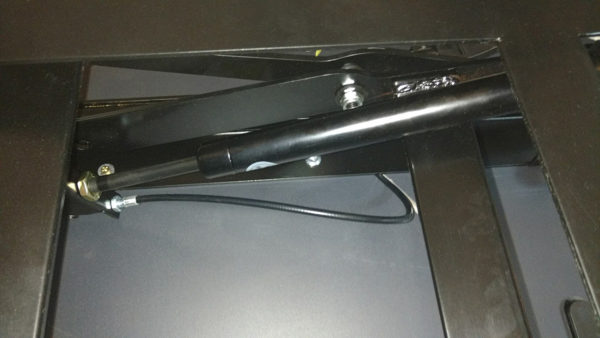
The desk definitely feels well-built and sturdy. It raises and lowers via a pneumatic spring system similar to ones that operate adjustable-height office task chairs (above view is looking underneath desk).
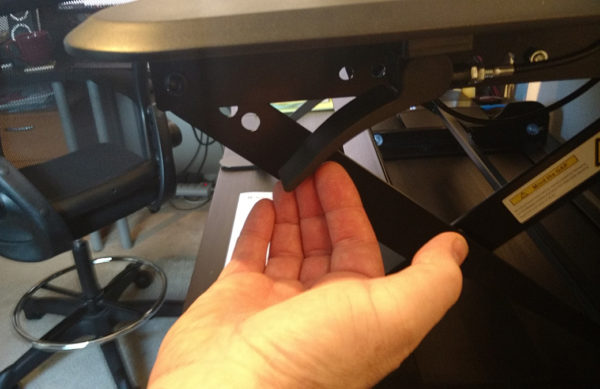
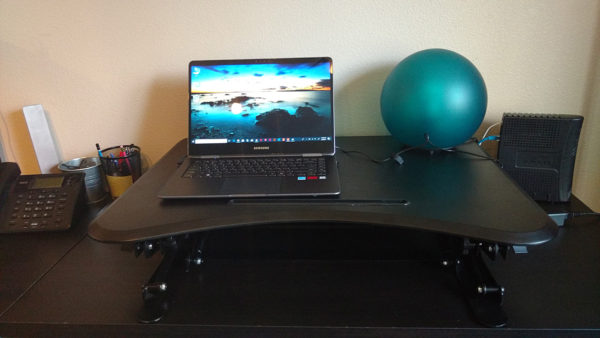
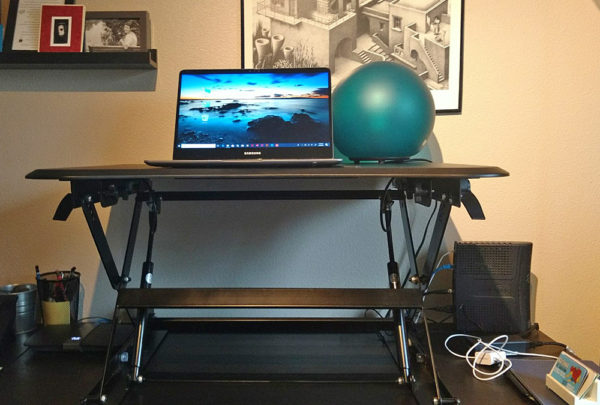
To raise the desk to the desired height, you press on two handles on the underside edges of the desk and gently lift. To lower the desk, press the handles again and push down. It moves straight up or down and the action is very smooth and relatively effortless. There are no “herky-jerky” movements or sudden lurches. Fully extended, the desk raised to a height of about 17 ½ inches from the tabletop. I’m 5-foot 9 and the comfortable height for me is about 14 inches. My work station table is 29 inches tall, making the total height 53 inches. So it should work well for all but perhaps the tallest people, though I suppose you could add something underneath the unit to raise the table surface height. Retracted, the top of the desk sits about 6 inches above the table height. I plan to use the desk while both standing and sitting. For sitting, all I need to do is raise my task chair a little to compensate for the extra height.
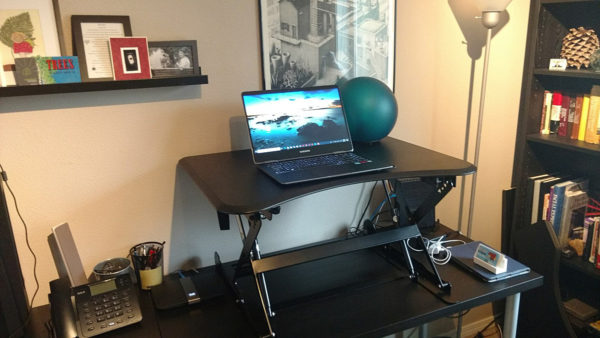
The size of the desktop is 31 ½ inches wide by 23 inches deep (about 21 inches deep at the center curve). Although it would have been spacious enough hold my twin monitors, I decided to use the desk for my laptop/graphics tablet. I could have shoehorned the unit into my main work area, but it was so much easier to set it in the empty space where my Yiynova graphics tablet used to sit (oh yeah, I had to retire the Yiynova. I’ll be writing a review of its replacement, the Samsung Notebook 9 Pro 2 in 1, very soon. Stay tuned.). The desk’s footprint is 24 ½ by 23 ½, so it fit easily on the table top.
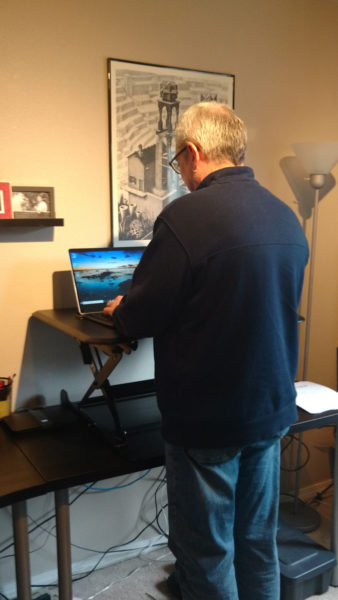
Standing at the desk while using the laptop is comfortable at the right height. I did find that I had the tendency to lean in a bit while working, but I think that is an issue with me (and maybe my 50+-year-old eyes!). The desk is equally comfortable to use when standing with good posture. Psychologically, there is something pleasing about standing while operating a computer. Perhaps the added height instills more of a sense of confidence. Or maybe it’s that it feels less like a computer work station are and more like a post on a starship or something.
Gripes
Not many- this is a pretty straightforward piece of equipment that works as intended. One thing I didn’t like, though, was the desktop surface. It’s strangely chalky and gritty. I’m not quite sure what it’s made of, but judging from the weight, it’s probably some kind of particle board. Maybe the weird texture comes from the material, the paint/coating or the combination of the two. Another thing some might have an issue with is the price. At $249.99 on Amazon, it’s one of the more expensive standing desks available. However, compared to a lot of the cheaper units, it has one of the highest weight-bearing capacities at 80 lbs. It would handle my dual monitor array and stand with no problem and not even break a sweat (if a desk actually could break a sweat, of course).
Healthier or Hyped?
Now for the million-dollar question: is it better to stand at work, at least at certain intervals during the day? What I came away from with my admittedly modest research is that, well, there’s really not a lot of evidence to either prove or disprove that notion. A Cornell University report stated that “Simply standing is insufficient. Movement is important to get blood circulation through the muscles.” The authors of the report tested sitting vs. standing to do computer work and ended up concluding that although there are some health risks incurred from sitting too much, standing at work probably didn’t impart any lasting health effects and even comes with its own set of risks. Similarly, a report on NPR in 2016 quoted a doctor from the Finnish Institute of Occupational Health commenting about the current stand-to-work trend: “What we actually found is that most of it is, very much, just fashionable and not proven good for your health.” Hmm.
So would I recommend this product? If you’re looking for a well-built, easy-to-set-up standing desk, then I would recommend it. Just be aware that the science isn’t in on the touted health and lifestyle benefits of using one. I plan to use mine when I need to get up and stretch, to do quick tasks or when I think that a change in posture might help me to think more clearly. But I harbor no illusions that this will prolong my life or give me the energy of a 20-year-old. If you really want to improve your health, take walks and eat more cruciferous vegetables.


First image: Nature’s treadmill; Second image: broccoli, a cruciferous vegetable
PROs:
Easy set-up and installation
Pneumatic mechanism works smoothly and effortlessly
Appears sturdy and well-built
Holds a lot of weight compared to its competitors
CONs:
Weird chalky surface on desktop
A bit pricey compared to other similar units
Lots of packing material to dispose of after installation



No comments yet. Be the first!